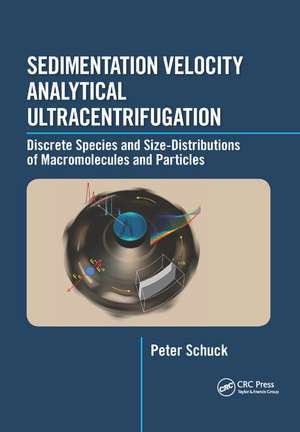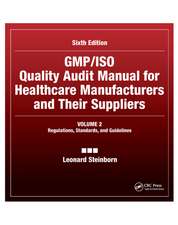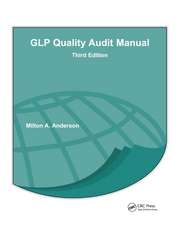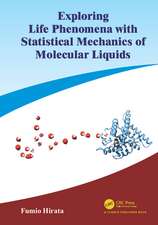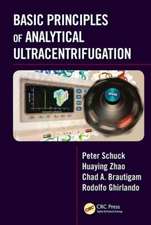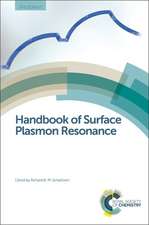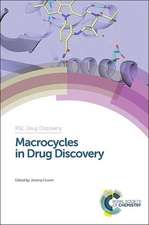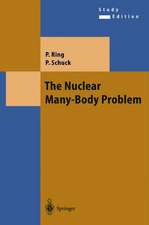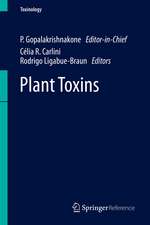Sedimentation Velocity Analytical Ultracentrifugation: Discrete Species and Size-Distributions of Macromolecules and Particles
Autor Peter Schucken Limba Engleză Paperback – 12 dec 2019
The methods are extensively illustrated, and supported with practical applications, as well as cross-references where to find the methods in the public domain software SEDFIT and SEDPHAT. The systems covered are discrete or polydisperse mixtures of sedimenting molecules or particles in dilute solution, such as proteins and other biomolecules and their stable complexes, man-made polymers, and nanoparticles, observed in different optical systems. A useful reference for researchers and graduate students of macromolecular disciplines, these methods form the essential foundation for the analysis of dynamic interacting systems, which are covered in the volume Sedimentation Velocity Analytical Ultracentrifugation: Interacting Systems.
Software referenced in the book is available for download at: https://sedfitsedphat.nibib.nih.gov/default.aspx
Preț: 312.43 lei
Preț vechi: 356.63 lei
-12% Nou
Puncte Express: 469
Preț estimativ în valută:
59.80€ • 62.19$ • 50.11£
59.80€ • 62.19$ • 50.11£
Carte tipărită la comandă
Livrare economică 14-28 martie
Preluare comenzi: 021 569.72.76
Specificații
ISBN-13: 9780367878283
ISBN-10: 0367878283
Pagini: 266
Dimensiuni: 178 x 254 mm
Greutate: 0.45 kg
Ediția:1
Editura: CRC Press
Colecția CRC Press
ISBN-10: 0367878283
Pagini: 266
Dimensiuni: 178 x 254 mm
Greutate: 0.45 kg
Ediția:1
Editura: CRC Press
Colecția CRC Press
Cuprins
Basic Analysis Principles
Sedimentation of Discrete Non-Interacting Particles
Properties of Sedimentation Coefficient Distributions
Distributions Of Non-Diffusing Particles
Distributions of Diffusing Particles
Sedimentation Coefficient Distributions from Boundary Derivatives and Extrapolations
Multi-Component Distributions
Practical Analysis of Non-Interacting Systems
Appendix A: Numerical Solutions of the Lamm Equation
Appendix B: Calculating Distributions
Sedimentation of Discrete Non-Interacting Particles
Properties of Sedimentation Coefficient Distributions
Distributions Of Non-Diffusing Particles
Distributions of Diffusing Particles
Sedimentation Coefficient Distributions from Boundary Derivatives and Extrapolations
Multi-Component Distributions
Practical Analysis of Non-Interacting Systems
Appendix A: Numerical Solutions of the Lamm Equation
Appendix B: Calculating Distributions
Notă biografică
Dr. Schuck obtained his Ph.D. from the Goethe-University Frankfurt am Main, Germany, where he worked on interactions of integral proteins of the erythrocyte membrane using analytical ultracentrifugation. He received his post-doctoral research training in physical biochemistry with Dr. Allen Minton at NIDDK, and joined the Bioengineering and Physical Science Program of NCRR as a Research Fellow in 1997. He is currently a Earl Stadtman Tenure-Track Investigator and Chief of the Dynamics of Macromoleular Assembly Section, Laboratory of Cellular Imaging and Macromolecular Biophysics at the National Institute of Biomedical Imaging and Bioengineering, National Institutes of Health.
Recenzii
"The beauty of this book is that it addresses, in just one place, theory, experiments, and computing in application to analytical ultracentrifugation (AUC) performed with biological and soft matter systems. As the author states, it is the ability to compute routine solutions to the Lamm equation of sedimentation that has transformed the capabilities of modern AUC experiments, and the Lamm equation is the cornerstone of this book. The reader is taken through a comprehensive mathematical tour of how to fit sedimentation coefficient distribution functions c(s) in over 200 pages. Following a recap of the basics at the start, we are presented with the main scenarios of how sedimentation is analyzed. This starts with discrete non-interacting particles and the distributions resulting from these, then it moves to consider the distributions that result from non-diffusing and diffusing particles. There are useful discourses into g*(s) analyses and multi-component distributions, and a neat touch is the inclusion of practical considerations in the fits at the end. There is a summary at the end of how the Lamm equation works. Irrespective of what type of system is being worked with, this authoritative text gives insight of how the appropriate analysis tools work. This is a truly excellent resource for any ultracentrifugation laboratory to consult when needed, with well-focused sections, and I will certainly be using it myself!"
—Steve Perkins, University College London, UK
"Covering modern sedimentation velocity methodologies for a number of possible solution systems, this new book is comprehensive, accurate, and precise. Based on a very strong mathematical background and including brief tutorials, one will be able to use this book as a dictionary of computer calculation-based modern sedimentation velocity methods, and refer to it even in 20 or 30 years."
—Susumu Uchiyama, Osaka University, Japan
—Steve Perkins, University College London, UK
"Covering modern sedimentation velocity methodologies for a number of possible solution systems, this new book is comprehensive, accurate, and precise. Based on a very strong mathematical background and including brief tutorials, one will be able to use this book as a dictionary of computer calculation-based modern sedimentation velocity methods, and refer to it even in 20 or 30 years."
—Susumu Uchiyama, Osaka University, Japan
Descriere
A follow-up to the experimental and instrumental aspects described in Basic Principles of Analytical Ultracentrifugation, the volume Sedimentation Velocity Analytical Ultracentrifugation: Discrete Species and Size-Distributions of Macromolecules and Particles describes the theory and practice of data an
